- Author Matthew Elmers [email protected].
- Public 2023-12-16 21:49.
- Last modified 2025-01-24 09:17.
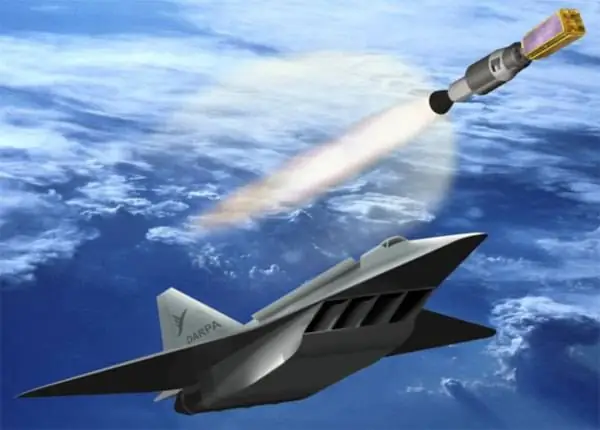
In an article dated 2017-04-02 Multi-mode hypersonic unmanned aerial vehicle "Hammer"
there was a link to the Rascal project:

Since the topic seems to have interested readers, I propose to consider this project in a separate article.
In 2001, the US Air Force issued an MNS-application * (hereinafter, an asterisk marks the terms and abbreviations, the decoding of which is given at the end of the article) outlining the requirements for the Operational Adaptive Space Launch System (ORS *).

The MNS requirements included the following basic basic objectives:
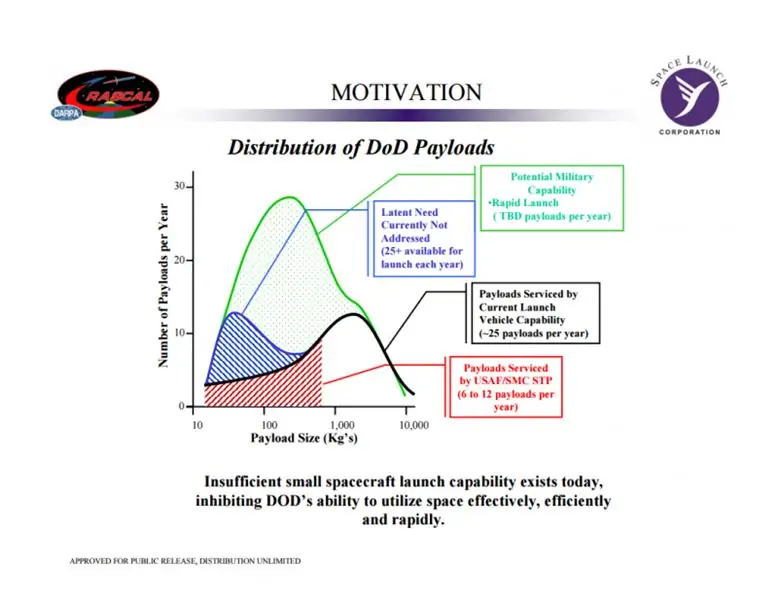
/ forecast of launch market needs /
In response to the MNS, as well as considering the anticipated commercial needs of the space launch market, several concepts have been proposed to meet these requirements.
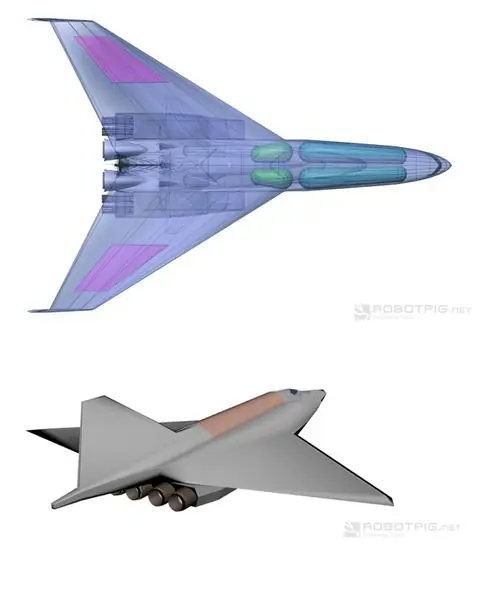
The most realistic was the project based on the principle of "air" launch.
Rascal-Responsive Access Small Cargo Affordable Launch supported by DARPA funding.
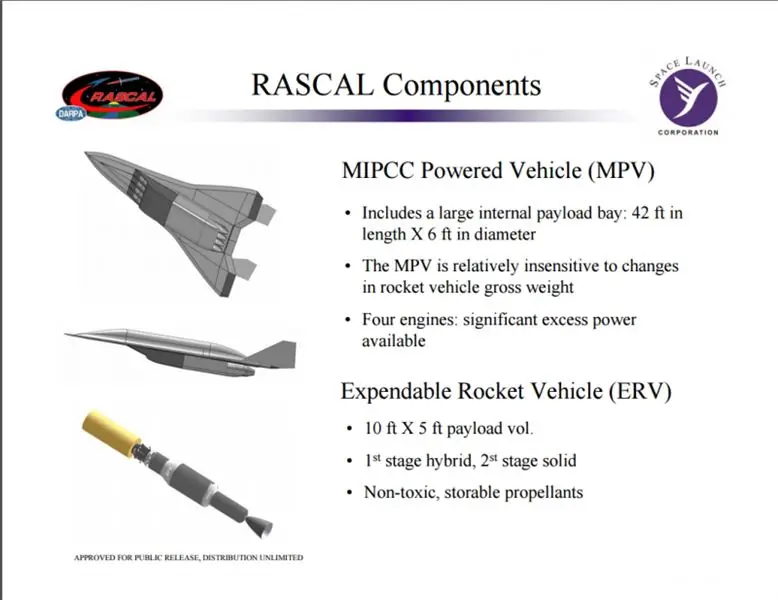
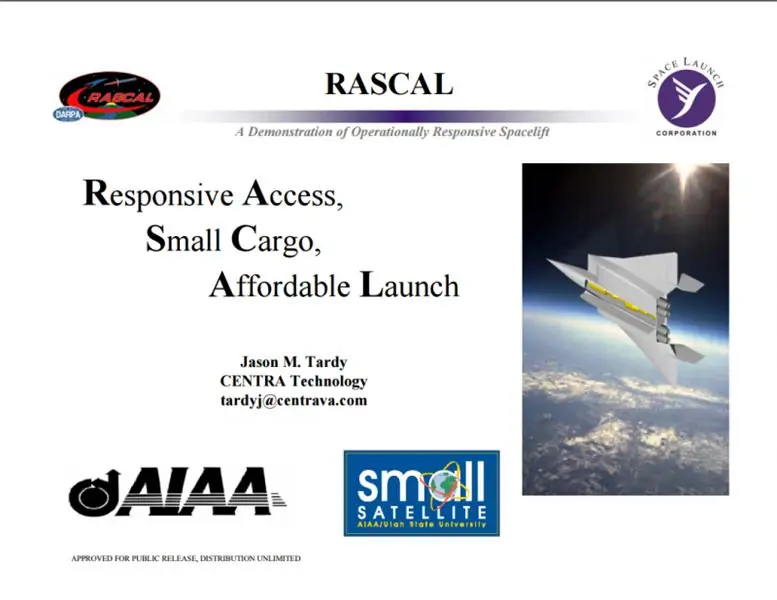
Air launch (AC) is a method of launching missiles or aircraft from a height of several kilometers, where the launched vehicle is delivered. The delivery vehicle is most often another aircraft, but it can also be a balloon or airship.
The main advantages of the aircraft:
The fact is that there is such an unpleasant physical law:
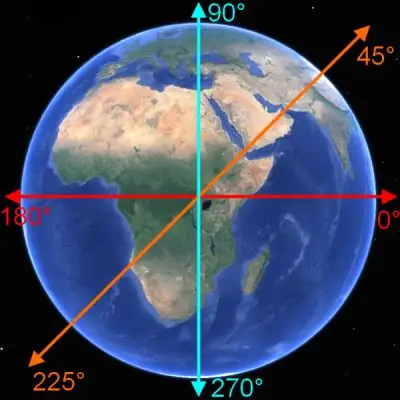
The initial inclination of the orbit cannot be less than the latitude of the cosmodrome
It is costly to build SC (joint ventures, spaceports) everywhere, and sometimes it is simply impossible. On the other hand, airfields (runways) cover almost the entire globe.

In theory, an aircraft carrier could also be used. Some kind of a combination of "Sea Launch" and ВС (air-launched spacelift).
In the Armed Forces system, any runway can actually be used, both military and civilian of the required category:
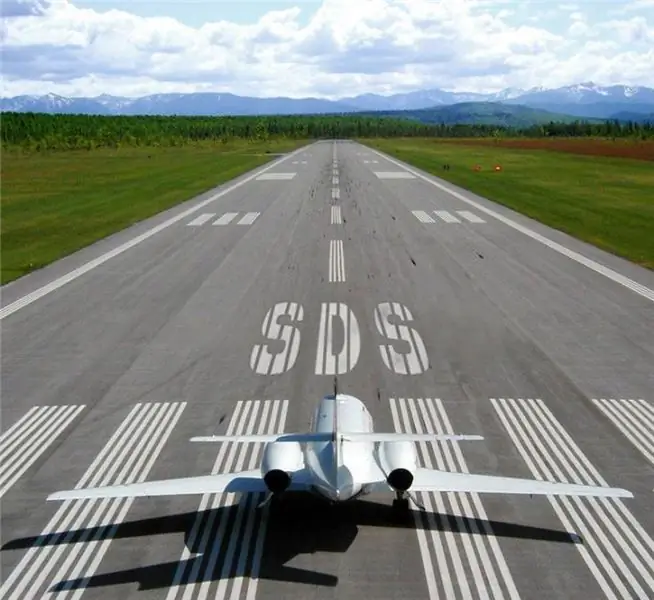
Example:
The total take-off weight of the videoconferencing system is not more than 60 tons. The Boeing 737-800 has a gross take-off weight of 79 tons. The runways that can accommodate Boeing 737-800 are only civilian in the US for 13,000 (we have about 300), and with military runways there are more than 15,000 airports.
;
Even more than that: the aircraft (carrier) itself can arrive at the manufacturing plant, there it is PROFESSIONALLY and in greenhouse conditions, the product is installed, tested, checked, the aircraft returns to the starting point (runway) and there, gaining altitude, at level 12-15 performs refueling, then acceleration, "slide" maneuver and launch of the orbital stage.
The videoconferencing system, in fact, does not need to "bring" the rocket, do the PRR / feasibility study, and the MIC itself, in fact, is not needed:
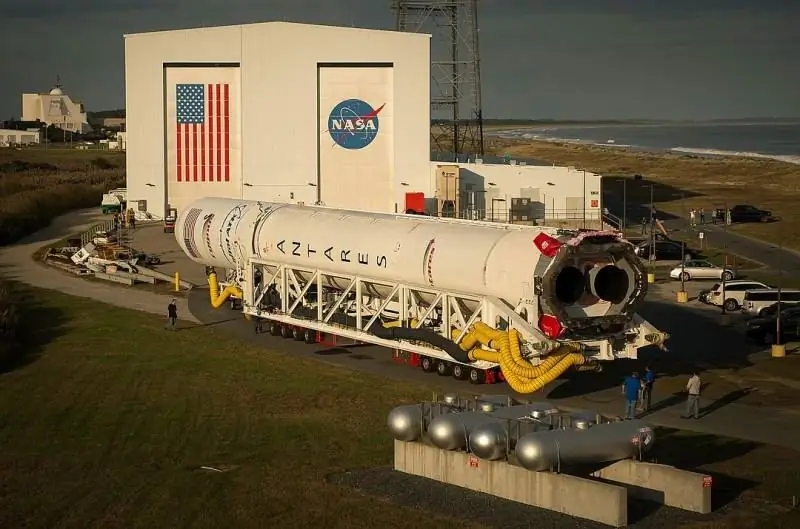
Cube-Sat platform as an example.
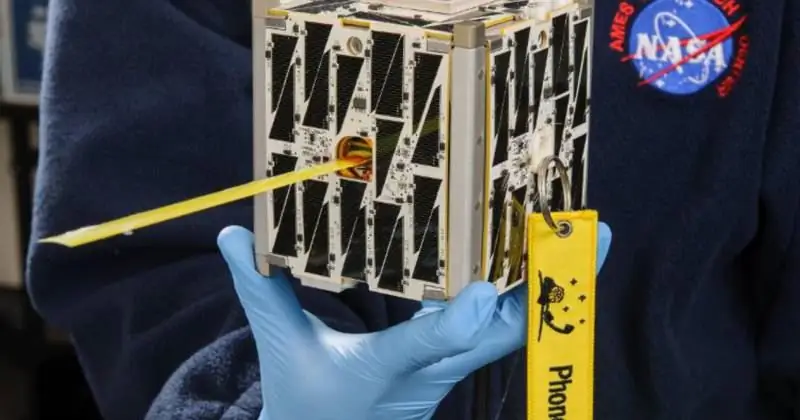
There are also disadvantages:
Launched in March 2002, RASCAL is an effort, supported and sponsored by TTO * DARPA, to develop a partially reusable airborne space launch system capable of delivering payloads to LEO quickly and regularly at a very economical cost.
Phase II (an 18-month program development phase) kicked off in March 2003 with the selection of SLC (Irvine, California) as the general contractor and systems integrator.


The RASCAL concept is based on the airborne Spacelift architecture, which consists of a reusable aircraft:
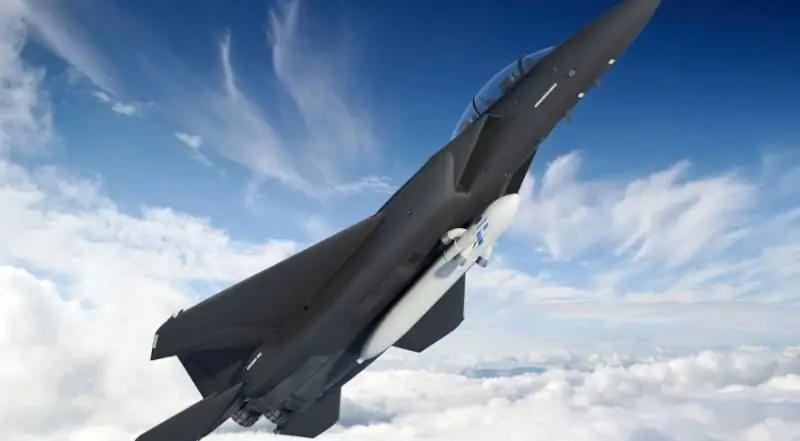
and a single-use rocket (booster) (ELV *), which in this case is called ERV *:
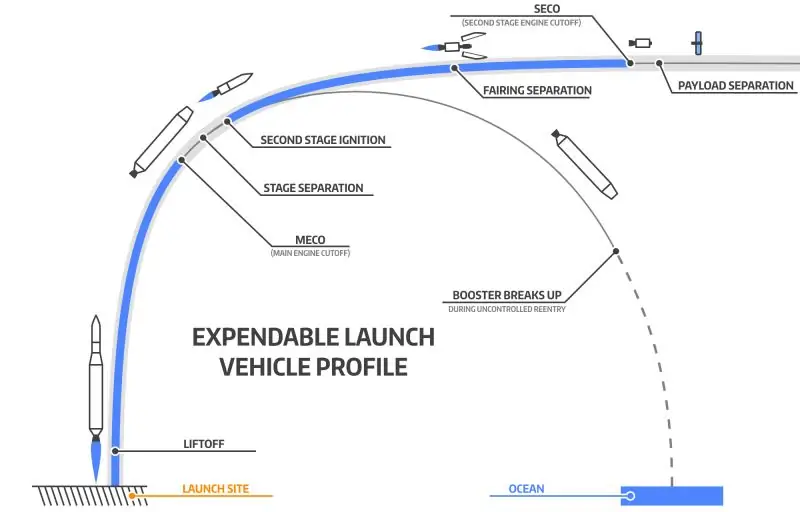
In a complex form in those days it was presented as follows:
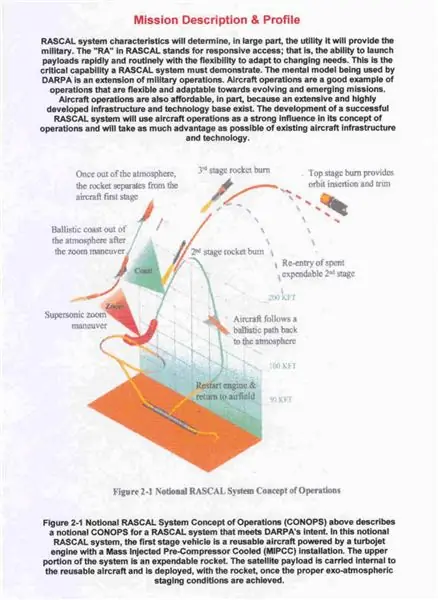
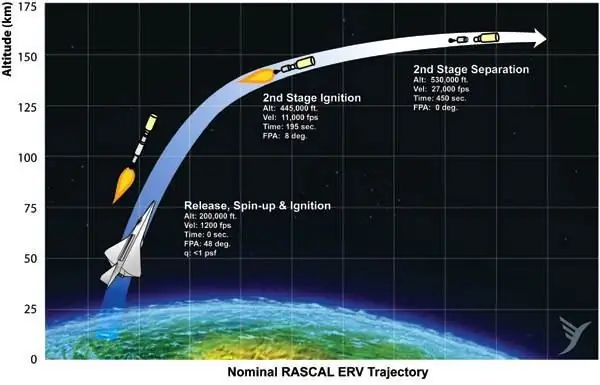
The turbojet engines of the reusable vehicle are made in an uprated version, known since the 50s as the MIPCC *.
MIPCC technology is excellent for achieving high Mach numbers when flying in the atmosphere.
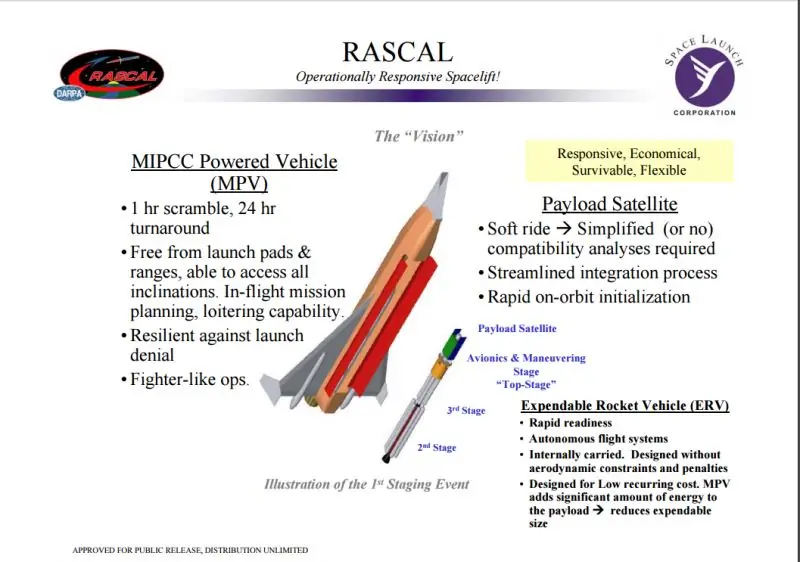
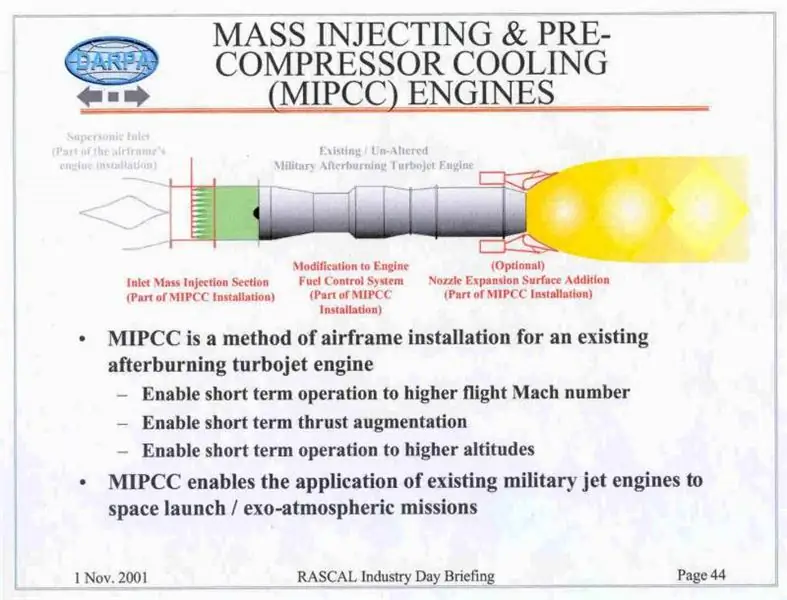
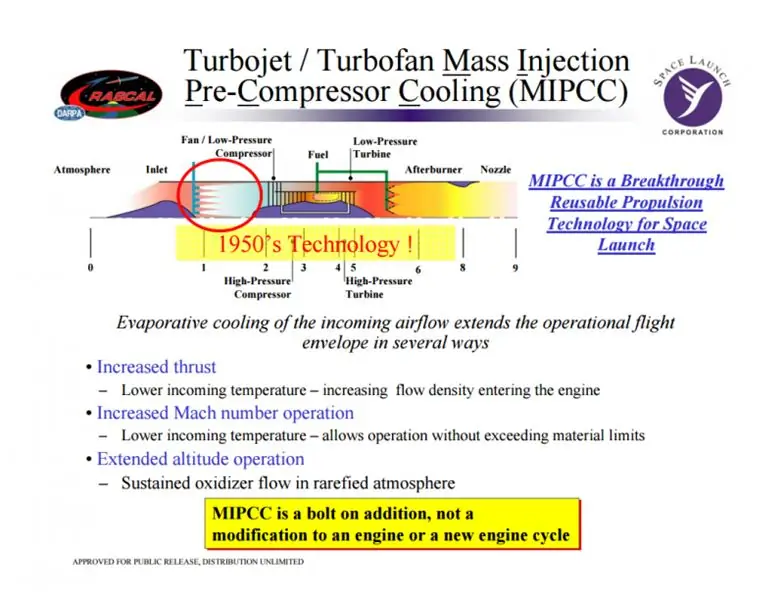
After reaching near hypersonic speeds in horizontal flight, the carrier makes an aerodynamic maneuver of the "dynamic slide" type (Zoom Maneuver) and performs an exo-atmospheric (from an altitude of more than 50 km) launch of a disposable rocket (booster stage).
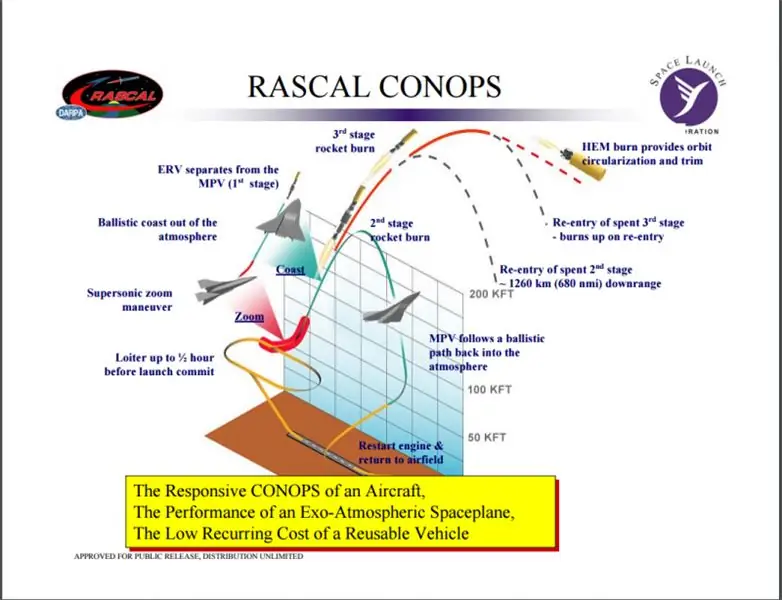
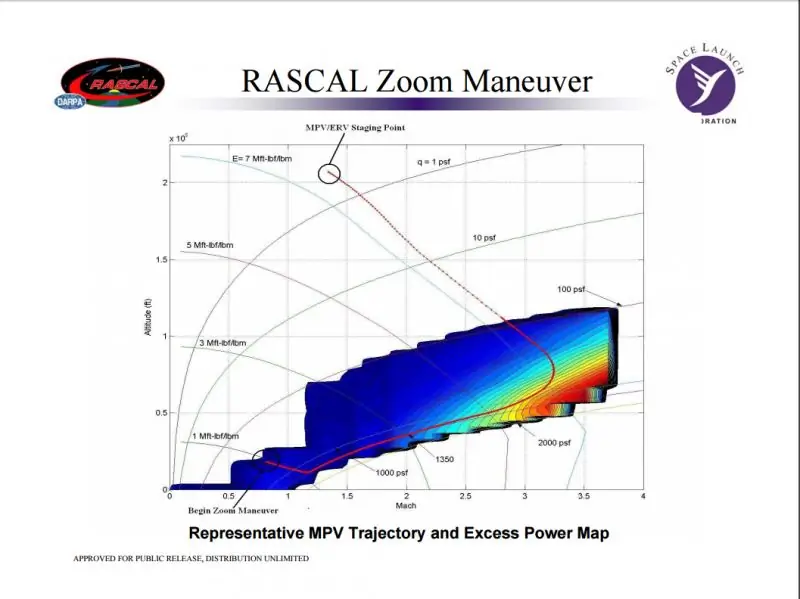
The high power-to-weight ratio of the turbofan engine with MIPCC technology not only allows a simplified two-stage ERV design, but also significantly reduces the structural requirements for the ERV, which, with such an output profile, does not experience any significant aerodynamic loads.
Subsequent re-launches are projected to be below $ 750,000 to deliver 75kg payload to LEO
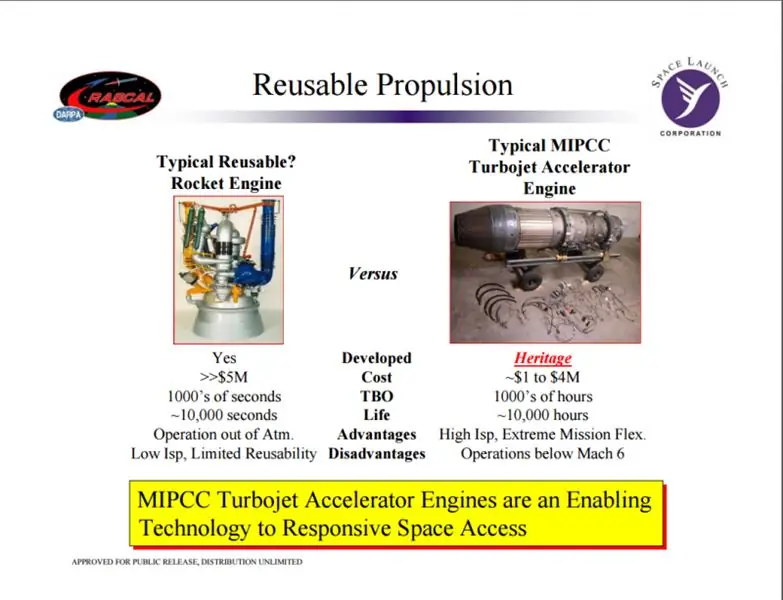

Due to its flexibility, simplicity and low cost, the RASCAL architecture can support a launch cycle between missions of less than 24 hours
In the future, it is planned to use an option with a reusable second stage of the system.
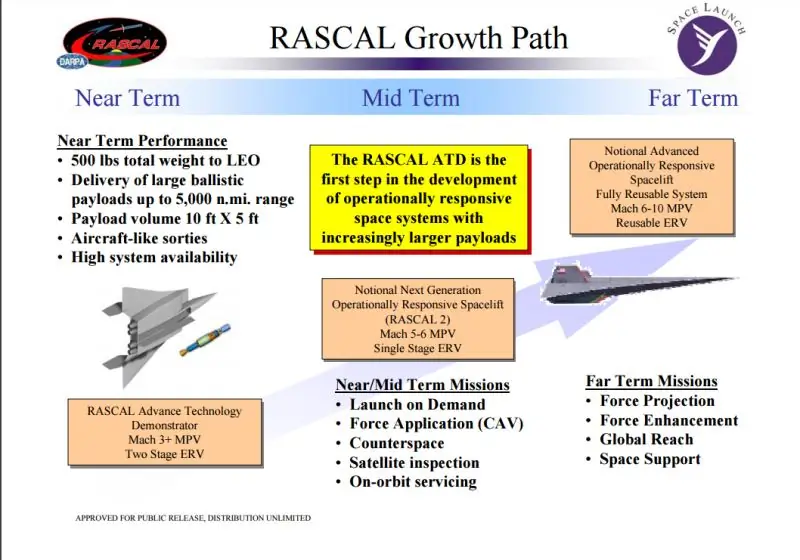
Interesting fact: in 2002, President of Destiny Aerospace, Mr. Tony Materna, inspired by the money and prospects of DARPA, got the idea to use for this system an existing and decommissioned American single-seat, single-engine supersonic fighter-interceptor with a deltoid wing Convair F-106 Delta Dart …
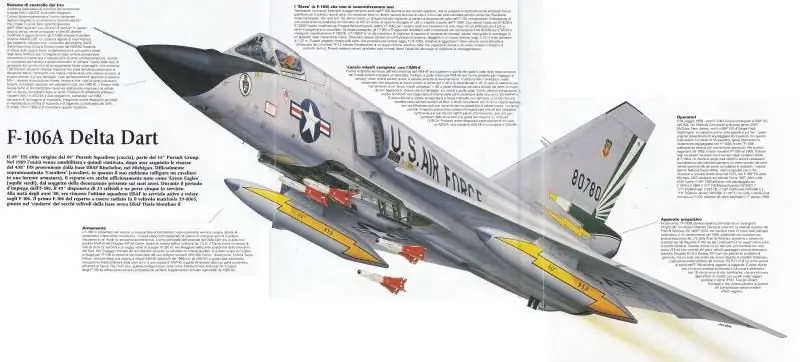
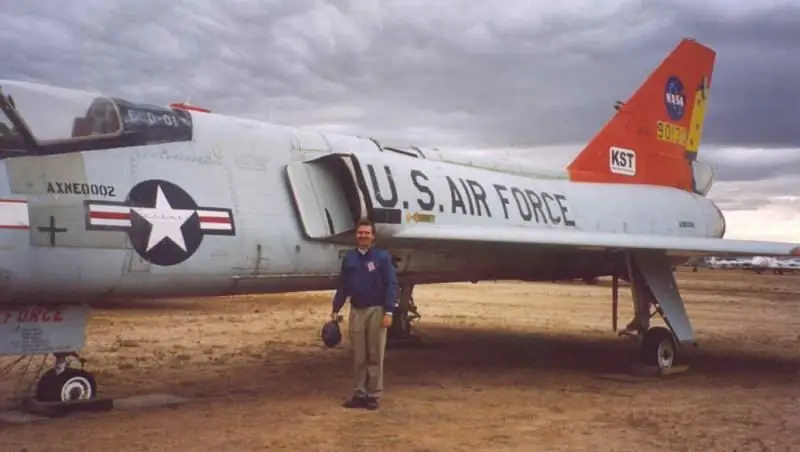
The idea was sound enough and easy to implement.
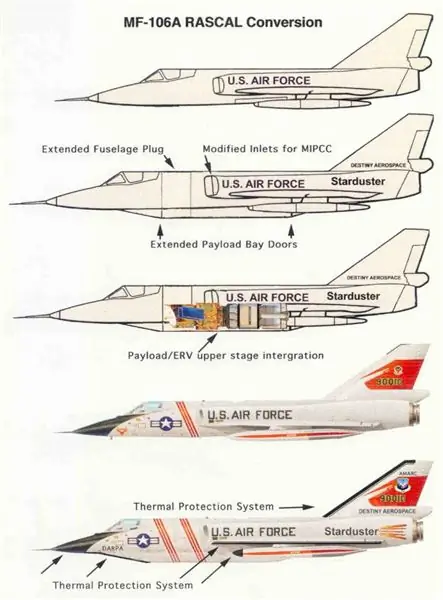
In fact, a modification of the Convair F-106B in the 60s was already tested with MIPCC technology. If I'm not mistaken, it was developed and tested on it.

It's a pity (from an engineering point of view) that the cheap and fast-paced RASCAL project based on the F-106 hasn't gotten off the ground after nearly two years of research.
Read the Final Draft of that proposal below
The small fleet of the seven remaining flying F-106s available from Davis Monthan AFB AZ was first reduced to 4 units (three F-106s were transferred for museum displays at Castle CA, Hill AFB, UT & Edwards AFB, CA), and Tony Matern never got interested and invested.
For more information on the F-106, see here:
Fighter-interceptors F-106 and Su-15 "Keepers of the sky"
It reminds me of our two MIG-31D, which "got" to Kazakhstan and just finished their life cycle.
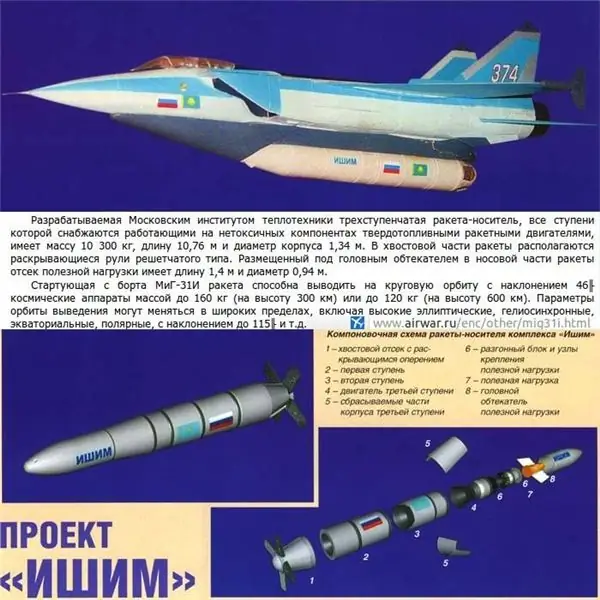
"Ishim" was based on "Contact", which was practically embodied in hardware:
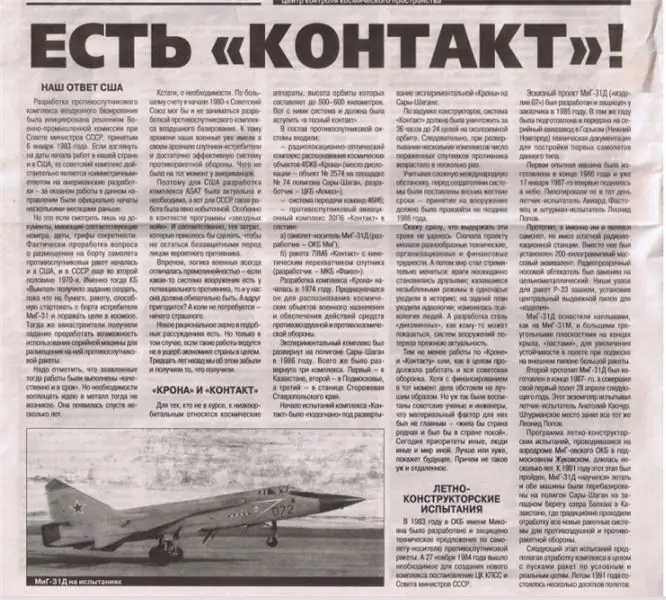
The first domestic successful test from a carrier aircraft: experimental edition "07-2" with a suspension of a standard rocket "79M6", from the Saryshagan airfield above the group of test ranges Bet-Pak Dala. July 26, 1991

And the blanks, without launching the rocket into the interception trajectory, were shot off about 20 units.
Note: The idea of Tomi Matern has not "sunk into oblivion". StarLab and CubeCab are planning to launch small-sized satellites into low-Earth orbit using 3D-printed rockets and aerial launch techniques. CubeCab's main task will be to improve the speed of launches of miniature spacecraft through the use of old F-104 Starfighter interceptors and inexpensive 3D-printed launch vehicles.
Although the F-104 first flew back in 1954, the career of this well-deserved aircraft could be extended, and not for the first time. Due to the high accident rate, the aircraft began to be massively removed from service back in the 70s, but its high flight characteristics allowed the car to hold out as a test platform and NASA flight simulator until the mid-90s.
Several F-104s are currently operated by private operator Starfighters Inc.
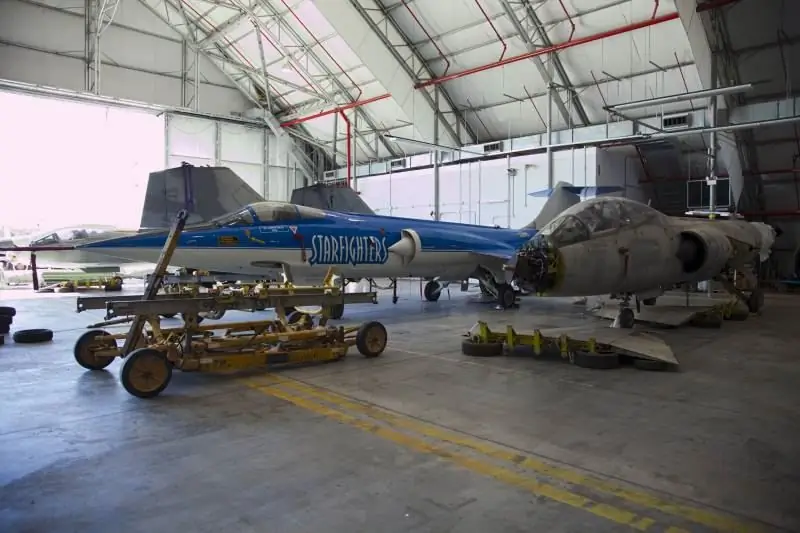
Its excellent climb rate and high ceiling make the F-104 a suitable platform for launching sounding missiles.
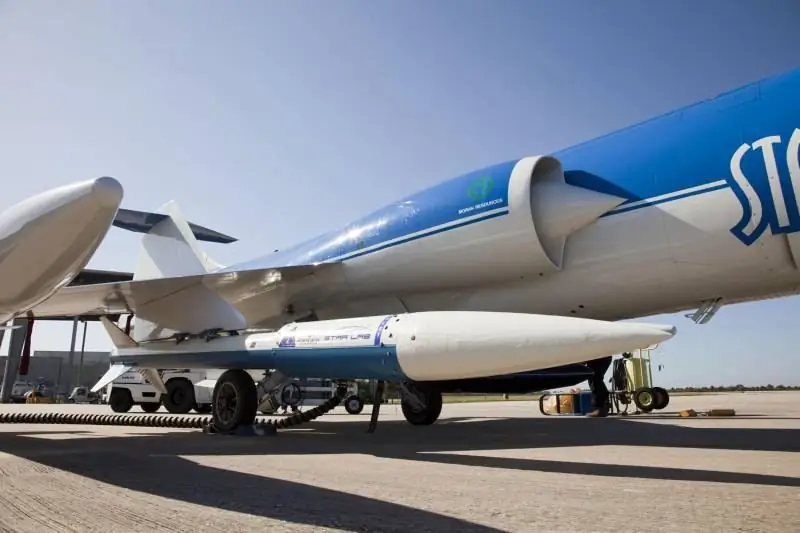
The estimated cost of one launch is $ 250,000. This is far from cheap, but much more profitable than using large launch vehicles with a partial payload.
The RASCAL project was closed by DARPA in favor of the ALASA project, which was also closed in 2015 in favor of the XS-1 project.
DARPA release- November 2015
Terms and abbreviations marked with "*":
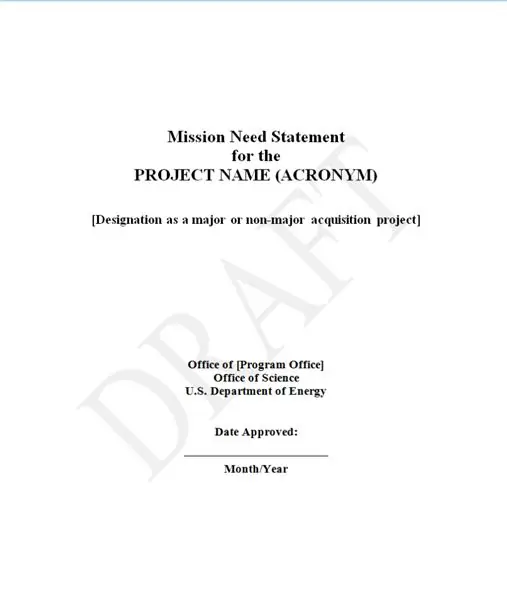

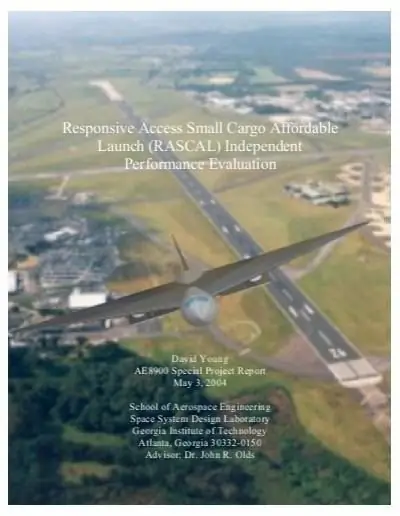
click LEO - Low Earth orbit
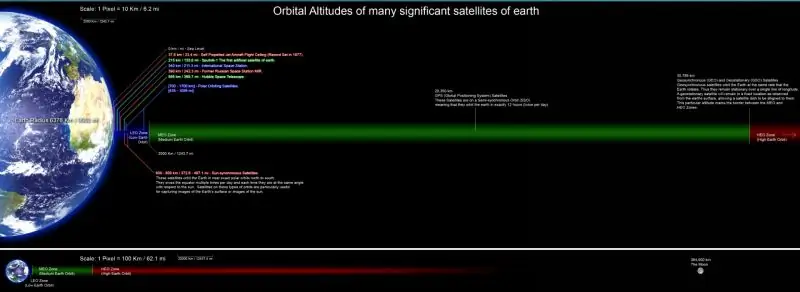
expendable launch vehicle (ELV)
ERV - Expendable Rocket Vehicle
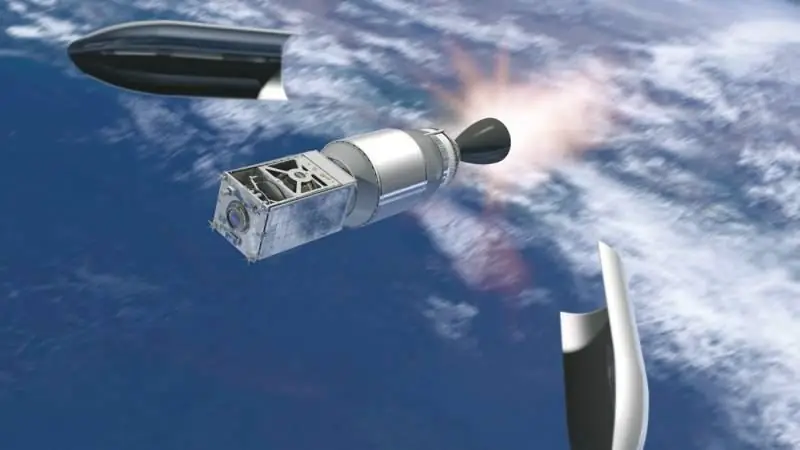
MIPCC - Mass Injection Pre-Compressor Cooling
TTO - Tactical Technology Office (DARPA)
Used documents, photos and videos:
www.nasa.gov
www.yumpu.com
en.wikipedia.org
www.faa.gov
www.space.com
www.darpa.mil
robotpig.net
www.456fis.org
www.f-106deltadart.com
www.aerosem.caltech.edu
www.universetoday.com
www.spacenewsmag.com
www.geektimes.ru (my page is Anton @AntoBro)






